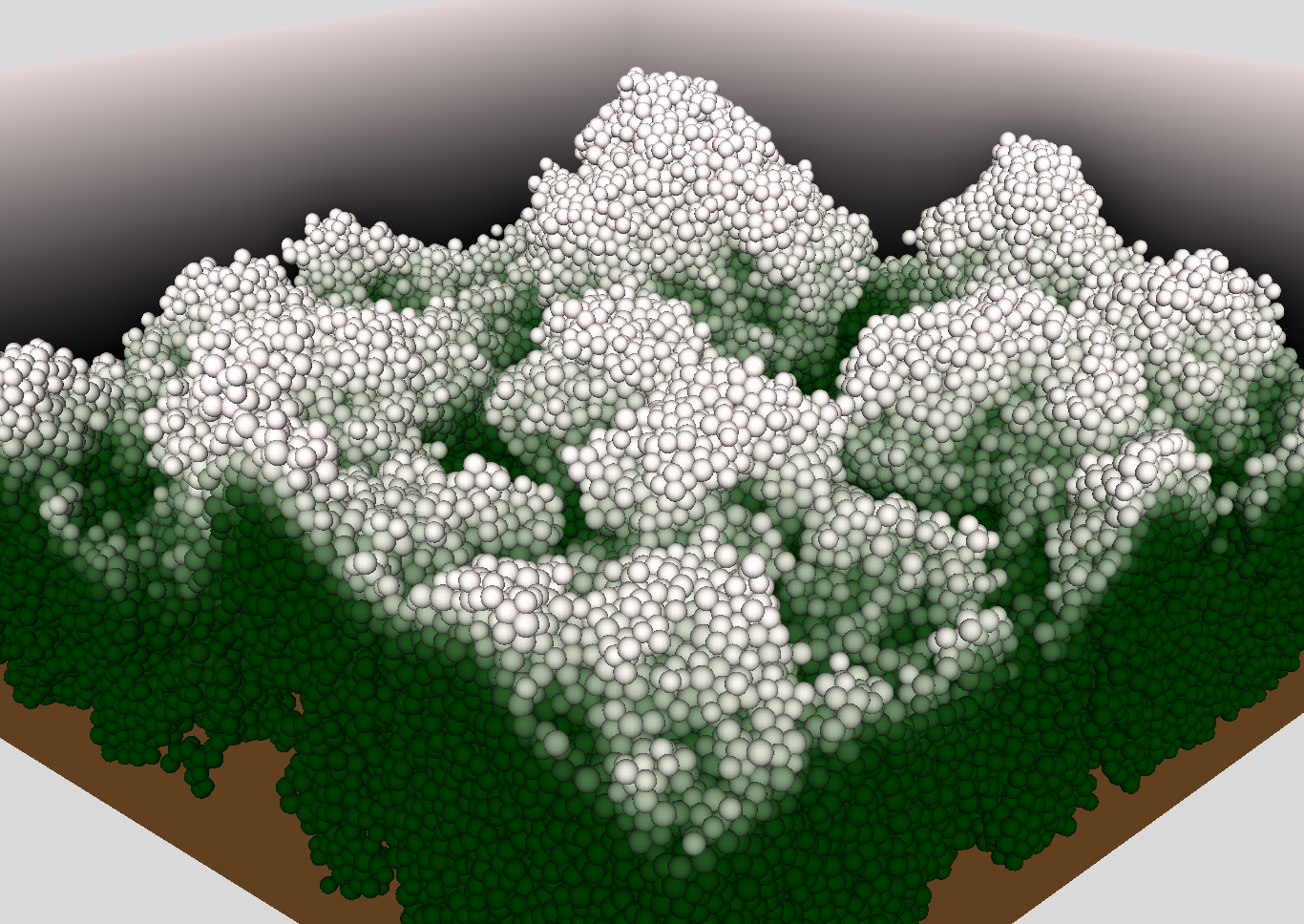🎄12 Days of HPC
Bacterial biofilms growing like trees in a forest
During the month of December we’re featuring blog posts from researchers from across the University of Leeds showcasing the fantastic work they do using our High Performance Computing system. Follow us @RC_at_Leeds to keep up to date with our 12 days of HPC blog series.
What’s your name?
David Head
What department do you work in?
School of Computing
What research question are you trying to answer?
Biofilms are the most prevalent form of bacteria on the planet, and can be both good (i.e. water treatment) or bad (i.e. chronic diseases) to humans. By developing a high-fidelity model of growing biofilms, it is possible to predict and understand what happens in real-world systems, and thus test ways to either control or remove biofilms. The model shown here focusses on population-level features of whole biofilms, and has been employed in a collaboration with the School of Dentistry to predict what factors cause dental plaque (the first known biofilm) to be ‘good’ (protective) or ‘bad’ (cause tooth decay).
How does HPC help your research?
Biological systems are very complex and models require many parameters to describe them. Systematically sampling this broad parameter space is challenging, and HPC helps perform many simulations in parallel, each with different parameter values. The high-fidelity nature of the model also benefits from a degree of parallelisation for each simulation, which HPC also helps to achieve in a reasonable time.
What is the potential impact of your research?
Better guidance for dietary regimes that benefit oral health, and a rapid pre-screening capability to reduce the number of length, costly experiments required to bring new products to the marketplace.
In your personal opinion what’s the coolest thing about your research?
The pretty pictures. Also, collaborating with microbiologists to learn about this fascinating scientific field which I previously knew next-to-nothing about.
What’s your favourite christmas film?
Die Hard


